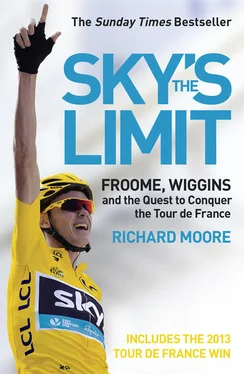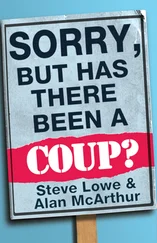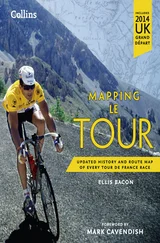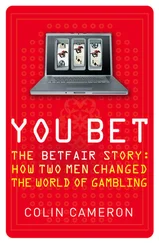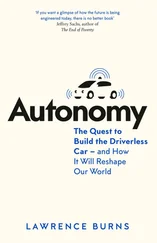Brailsford seemed out of his comfort zone, which, for several years, has been the centre of a velodrome, surveying his riders as they circle the boards of the track, talking to his coaches, in conference – arms folded – with Shane Sutton. With Team Sky, Brailsford’s job title is team principal, which seems a bit vague (and, again, different), other than in one important respect: he’s the man with overall responsibility. But on the ground, during races, the sports directors will call the shots. Here in Adelaide the man in that role is one of the team’s four sports directors, Sean Yates, an experienced British ex-professional; indeed, a former stage winner and wearer of the yellow jersey in the Tour de France. Yates has been overseeing the team’s training all week in Adelaide.
It is clear that Brailsford, having just arrived, isn’t quite sure yet of his role. This is not his world; not yet. He wants to focus, however, on the bigger picture; on the many races in the early part of the season, and the spring Classics, all leading up to Team Sky’s major target, the Tour de France, where they will be aiming to support their leader and homegrown talisman, Bradley Wiggins, in his bid for a place on the podium in Paris.
‘People keep asking, “What would be a good race for us here, or what would make a good season?”’ says Brailsford. ‘The important thing is to try and not underperform. We’re trying to create an environment in which the riders can perform to the very best of their ability. So if they underperform, we’re doing something wrong.’
In Rymill Park the first-day-of-term feeling means an intoxicating sense of excitement combined with nervous anticipation; of new teams and new outfits; of glistening new bikes; of gleaming legs, unblemished by the scars and road rash that will disfigure them in the weeks and months to follow; of excitable Australian fans, who in previous years have only been able to watch the great European stars of the sport on television, and at night. Everything is shiny and new, except for 38-year-old Lance Armstrong, leading his new RadioShack team into the second year of his comeback.
In the pits, immediately after the first bend of the 1.1km circuit, the team cars are lined up, side by side, with the Team Sky vehicle – a Skoda, supplied by the sponsor, rather than their usual Jaguar – flanked by Française des Jeux and Astana, then Garmin-Transitions and HTC-Columbia. Brailsford and Sutton slap their riders on the backs and whisper encouraging words as they leave the shaded area behind the car and pedal to the start.
‘We’ve got a game plan,’ says Brailsford as he and Sutton perch on the bonnet of the car. Planning to the nth degree is what Brailsford is most famous for. But he and Sutton look apprehensive and on edge as they await the countdown and the firing of the gun.
In contrast is Bob Stapleton. As the owner of the rival HTC-Columbia team, Stapleton’s position is similar to Brailsford’s. Stapleton is the man in charge, but he has always appeared relaxed in that role. Typically, he can be found hovering around the fringes of his team in the mornings, chatting easily to journalists. Like Brailsford, Stapleton tends to be viewed as something of an outsider in a sport which has a reputation for being resistant to, and suspicious of, outsiders. He was a millionaire businessman in his native California before being parachuted in to clean up and manage one of the world’s top teams in 2006. But since then he seems to have overcome any suspicion or hostility. His manner is amiable and open: that must help. But it helps even more that his team, HTC-Columbia, is successful, and wins more races than any other.
Now, as the first race of the 2010 season gets underway, Stapleton wanders away from his own team car and strolls towards Brailsford and Sutton. But he doesn’t quite make it that far, stopping and sitting on the bonnet of the Astana team car, whose staff, in animated conversation, are sitting on the tailgate, facing away from the action. (Such apparent disinterest among people working at this level of the sport can be fairly typical, if slightly unusual at the first race of the season. It suggests a certain complacency in some teams, which Brailsford has already identified as an opportunity.)
In his Columbia clothing – gentle beige and pastel turquoise – Stapleton, as he smiles and asks, ‘Mind if I join you guys?’, and settles on the bonnet of the Astana car to watch the action unfold, appears as laidback as a millionaire Californian cycling enthusiast who has been able to indulge his passion for cycling by running his own team. Which he is. His sports director, Allan Peiper, cuts a less relaxed figure by the HTC car, an earpiece and microphone connecting him to his riders, and making him look like a bouncer in a rowdy football pub. Sutton and Brailsford are sitting on the bonnet of the Team Sky car, with Sean Yates in close attendance. But Yates is not linked up by radio to his riders. ‘Our boys know what they’re doing,’ says Sutton.
What they appear to be doing, in the early part of the race, is remaining as invisible as possible. Attacks are launched – the young Australian Jack Bobridge is particularly aggressive – and brought back by a peloton that seems to be quickly into the speed, and rhythm, of racing. But at half-distance a break goes clear and stays clear. It includes Lance Armstrong. ‘He’s a guy with a lot going on this year,’ observes Stapleton cryptically (though also presciently).
Armstrong is joined by four other riders, and they work well as a quartet, building a lead that stretches to almost a minute over the peloton. Still Team Sky, in their distinctive, predominantly black skinsuits, are anonymous, hiding somewhere in the middle of the pack. Brailsford and Sutton remain perched on the bonnet of the car, apparently content that the plan is being followed, though there’s a moment of panic when Ben Swift appears after the bunch has passed, the spokes having been ripped out of his rear wheel by a stray piece of wire. The young British rider is given a spare bike, pushed back on to the course, and quickly rejoins the bunch.
While Brailsford and Sutton focus on the race, Stapleton watches with what appears to be amused detachment. He wonders aloud whether, without ProTour status, this circuit race in central Adelaide – really only a curtain-raiser to the main event, the Tour Down Under – even counts as the first race of the season.
‘If we win, it is the first race of the season,’ decides Stapleton, with a twinkle in his eye, after giving it some thought. ‘If we don’t, it doesn’t matter.’
The Armstrong break is allowed to dangle out in front long enough for the crowd to start to believe that the American might win. But with four laps to go Stapleton’s HTC squad hits the front, a blur of dazzling white and yellow leading the peloton as they fly past the pits area, travelling noticeably, and exhilaratingly, faster.
‘Oh yeah, now we go,’ says Stapleton. Shadowing Stapleton’s team, though, are five Team Sky riders, packed equally tightly together. And shadowing is the word: in their dark colours they look sinister, menacing.
On the next lap HTC still lead, Sky still follow. But the next time, with two to go, the speed has gone up again, and the HTC ‘train’ of riders has been displaced from the front: now it’s Sky who pack the first six places, riding in close formation, with Greg Henderson, their designated sprinter, the sixth man. ‘That’s all part of the plan,’ says Stapleton with a chuckle.
True enough: HTC surge again, swamping Sky. And in previous seasons that would have been it: game over. But Mat Hayman leads his men around HTC and back to the front; then he leads the peloton in a long, narrow line for a full lap. Once Hayman has swung off, HTC draw breath and go again, but Sky have the momentum now, and they’re able to strike back. On the final lap, the two teams’ trains are virtually head to head – they resemble two rowing crews, as separate and self-contained entities – until the final corner, when HTC’s sprinter, André Greipel, commits a fatal error: he allows a tiny gap to open between his front wheel and the rear wheel of his final lead-out man, Matt Goss. It is a momentary lapse in concentration, or loss of bottle by the German, but the margins are tiny at this stage of the race, and there isn’t time for Greipel to recover. Henderson has been sitting at the back of the Sky ‘train’, watching his handlebar-mounted computer read 73kph (‘I thought, “Holy shit! I’ve never been in such a fast lead-out train”’), and now, as they enter the finishing straight, Henderson’s lead-out man, Chris Sutton, dives into the gap created by Greipel’s hesitation. And as Goss begins to sprint, Sutton and Henderson strike.
Читать дальше
